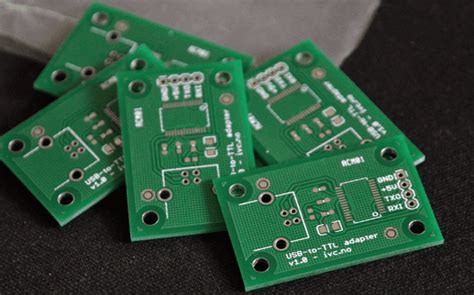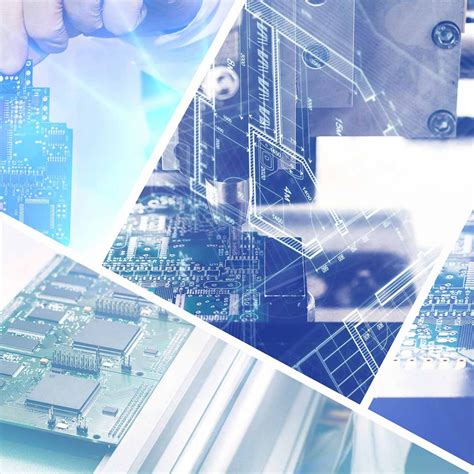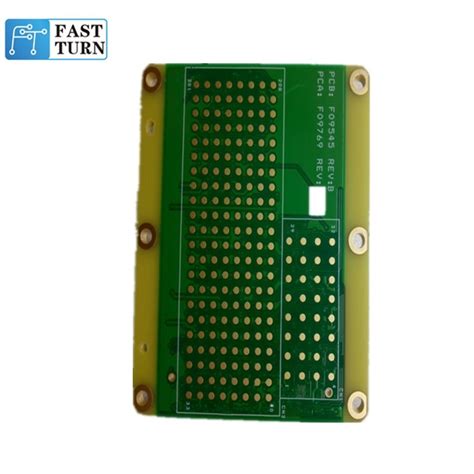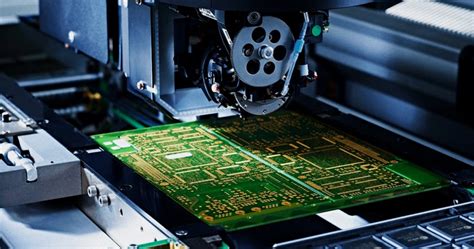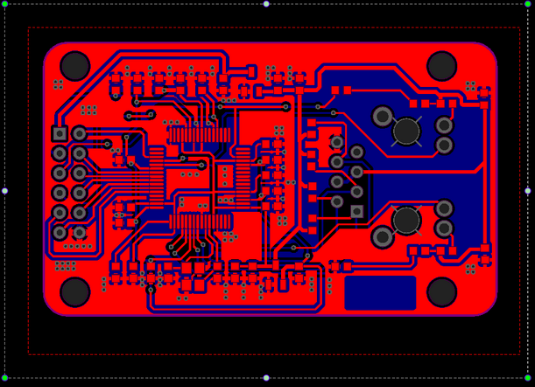Understanding PCB Assembly Prices and Cost Factors

Key Takeaways
Understanding the complexities of pcb assembly pricing is essential for companies looking to optimize their production processes. The prices associated with PCBA (Printed Circuit Board Assembly) can vary significantly based on several critical factors. For instance, material quality plays a pivotal role; higher-grade materials typically provide enhanced durability and performance, which can justify a higher price point. Similarly, design complexity is another decisive element; intricate designs require more advanced manufacturing techniques and close attention to detail, consequently increasing the overall cost.
Moreover, production volume influences pricing in a major way. Generally, larger volumes can lead to economies of scale, allowing manufacturers to reduce the per-unit cost of assemblies. This relationship highlights the importance of assessing one’s production needs when estimating pcb assembly costs.
“Understanding these dynamics can help businesses make informed decisions about their PCB needs.”
| Cost Factor | Impact on Pricing |
|---|---|
| Material Quality | Higher quality leads to increased costs |
| Design Complexity | Intricate designs require advanced techniques |
| Production Volume | Larger volumes typically lower per-unit costs |
In summary, businesses should carefully evaluate these aspects to ensure they achieve an ideal balance between quality and cost in their PCBA projects.

Understanding PCB Assembly Prices: An Overview
Navigating the realm of pcb assembly prices can be quite complex, as various components contribute to the final cost structure. When assessing pcba pricing, one must consider multiple elements that play significant roles in determining overall expenses. Quality of materials is paramount; higher grade materials often incur greater costs but yield improved performance and reliability. Beyond material quality, the complexity of the design itself dramatically influences pricing; intricate designs with multiple layers or specialized components require more precise manufacturing processes, which can increase labor and tooling costs. Additionally, the scale of production significantly affects pricing—bulk orders typically lead to lower per-unit costs due to economies of scale. Understanding these interrelated factors is essential for businesses looking to optimize their pcb assembly expenditures while maintaining the desired quality and performance standards in their electronic projects. By recognizing how each element fits within the broader pricing landscape, stakeholders can make informed decisions that align with their budgetary constraints and project requirements.
Key Cost Factors Impacting PCB Assembly Pricing
When it comes to PCB assembly prices, several critical cost factors play a significant role in determining the final pricing structure. First and foremost, material quality is paramount; the choice of substrates, solder masks, and other components directly influences not only the durability of the finished product but also its cost. Higher quality materials often lead to better performance in PCBA applications, justifying their increased expense. Another vital aspect is design complexity. Designs that require intricate layouts, multiple layers, or specialized components can significantly elevate manufacturing costs due to longer production times and specialized equipment needs. Additionally, the production volume greatly impacts pricing; typically, higher order volumes result in lower per-unit costs as manufacturers can optimize their processes for efficiency. Therefore, understanding these key factors—material quality, design complexity, and production volume—offers instrumental insights into how they contribute to overall PCB assembly costs and helps businesses make informed decisions when planning their projects.

Material Quality and Its Influence on PCB Costs
When considering PCB assembly costs, one of the most significant factors is the material quality used in the production process. High-quality materials contribute to a more reliable and durable printed circuit board assembly (PCBA), which can lead to fewer failures during operation and, ultimately, reduced costs over time. Designers must carefully select materials like copper, substrates, and soldering compounds that align with their project requirements. The choice of these materials not only affects the initial investment but also impacts performance and longevity. For instance, using premium grades of FR-4 substrates can enhance thermal management properties but also increase the pcb assembly price. Consequently, professionals in the industry must evaluate whether these enhancements justify the additional expense based on the end-use of the PCB. In summary, by understanding how material quality influences overall costs, companies can make informed choices that balance performance with budget considerations in their PCB assembly projects.
The Role of Design Complexity in PCB Assembly Pricing
Design complexity plays a significant role in determining PCB assembly costs, influencing various aspects of the production process. The more intricate the design of a printed circuit board (PCB), the higher the material and labor costs typically become. Complex designs may require additional components, sophisticated routing, and specialized fabrication techniques, all of which contribute to increased pricing in PCBA services. For instance, multilayer boards demand precise alignment and more rigorous testing, which adds to labor time and material expenses. Furthermore, advanced features such as fine pitch components and intricate vias not only heighten design complexity but also necessitate specialized equipment and skilled personnel for assembly. Consequently, when engaging in PCB assembly, companies must consider how design intricacies will impact their overall budget. As such, a thorough understanding of how design affects costs can assist businesses in making informed decisions regarding their PCB projects and help them strike a balance between innovation and affordability in their manufacturing processes. Understanding these nuances is essential for achieving optimal results while managing costs effectively within the competitive landscape of PCBA services.
Production Volume: Effects on PCB Assembly Prices
When assessing PCB assembly prices, production volume plays a pivotal role that often dictates the overall costs associated with PCBA services. Generally, larger production volumes lead to reduced costs per unit due to economies of scale. This means that as the number of units increases, certain fixed costs, such as setup and tooling, are distributed over a larger quantity, subsequently lowering the cost for each individual PCB assembly unit. Conversely, smaller production runs may result in higher prices as the same fixed costs are spread across fewer units. Additionally, manufacturing processes for low volumes can require more manual interventions and less automation, further driving up per-unit costs. Understanding this relationship helps stakeholders make informed decisions regarding their PCBA requirements and budget allocations. It’s crucial to also consider how this production volume influences lead times, as bulk orders typically enjoy quicker turnaround times due to streamlined processes aimed at higher outputs. Thus, evaluating your organization’s needs against production volume can provide significant insights into optimizing PCB assembly expenses while meeting time constraints effectively.

Comparative Analysis of Pricing in Different PCB Assembly Services
When assessing PCB assembly services, it’s crucial to understand that pricing can differ significantly among providers. The varied costs associated with PCBA often stem from several factors, including economies of scale, geographical location, and the specific capabilities offered by each service. For instance, manufacturers that operate at a larger scale might provide more competitive rates due to reduced overhead costs per unit produced. In contrast, boutique firms may charge a premium for specialized services or intricate design requirements that require a higher level of craftsmanship and attention to detail. Additionally, geographical factors can lead to variations in labor and material expenses; providers based in regions with lower operational costs might offer more attractive pricing structures compared to their counterparts in higher-cost areas. It is also essential to consider additional services such as testing and assembly support that may influence the final pricing of PCBA. By conducting a comparative analysis of different PCB assembly options while keeping these variables in mind, businesses can make more informed decisions that align with their project objectives and budget constraints.
Strategies for Reducing PCB Assembly Costs
Reducing the costs associated with pcb assembly requires a multifaceted approach that addresses several key areas. One effective strategy is to focus on optimizing the design of the printed circuit board (PCB). By simplifying the layout and minimizing complexity, manufacturers can significantly cut down on both material and labor costs during the assembly process. Additionally, selecting high-quality yet cost-effective materials can contribute to overall savings, ensuring that the durability of the final product is not compromised while keeping expenses in check.
Another important factor is production volume; higher volumes can lead to economies of scale that drastically reduce per-unit prices. Therefore, it’s advantageous for companies to plan their production runs strategically, ensuring bulk orders and continuous production cycles. Engaging with reputable PCB assembly service providers that offer competitive pricing while maintaining quality standards also plays a vital role in managing costs.
Furthermore, employing advanced manufacturing techniques such as automation can streamline processes and reduce labor costs significantly. By integrating technology into assembly lines, efficiency is enhanced and potential errors are minimized, which also correlates to lower waste levels throughout production.
Incorporating these strategies not only aids in reducing expenses but also enhances overall operational efficiency within the pcba (printed circuit board assembly) segment, making it crucial for companies aiming to remain competitive in a dynamic market landscape.
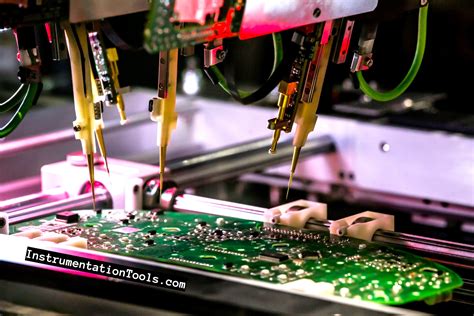
Future Trends in PCB Assembly Pricing and Cost Management
As the electronics industry continues to evolve, the landscape of pcb assembly pricing is also undergoing significant changes. Emerging technologies, such as automation and smart manufacturing, are set to reshape how manufacturers approach pcba processes, potentially leading to decreased labor costs and increased efficiency. Moreover, the rising demand for smaller, high-performance devices is pushing for innovations in pcb design that may initially elevate prices but ultimately provide a competitive edge through optimized functionality.
Additionally, the global supply chain dynamics play a crucial role in determining pcb assembly costs. As manufacturers seek to mitigate risks associated with supply disruptions, they may adopt diversified sourcing strategies or invest in localized production capacities. These strategic moves can lead to shifts in pricing structures as companies adapt to current market demands.
Furthermore, the integration of advanced materials and techniques will likely influence cost management practices in the pcba industry. As electronic components become more sophisticated, manufacturers must consider not only material costs but also the long-term value provided by enhanced performance and reliability. By understanding these key cost factors, businesses can make informed decisions that balance quality with affordability.
Overall, as we look toward the future of pcb assembly, it is crucial for stakeholders to stay abreast of these trends and adapt their strategies accordingly. This proactive approach will not only help manage costs but also ensure that companies remain competitive in an ever-changing market landscape.
Conclusion
In summary, understanding PCB assembly prices is crucial for both manufacturers and clients in the electronics sector. Several critical factors play a significant role in determining the final cost of PCBA services. These include the material quality, which directly influences durability and performance, and the design complexity, which can significantly affect the labor and processing time required. Additionally, production volume cannot be overlooked; larger quantities generally mean lower per-unit costs due to economies of scale. As the industry continues to evolve, staying informed about these elements will enable stakeholders to make better decisions and optimize their expenses. Understanding how these various factors interplay will empower companies to navigate the complexities of PCB pricing effectively, ensuring they achieve both quality and cost-efficiency in their projects. The insights gleaned from this analysis will pave the way for informed negotiations and strategic planning in future PCB assembly endeavors.
FAQs
What factors influence the overall cost of pcb assembly?
The overall cost of pcb assembly is influenced by several key factors, including material quality, design complexity, and production volume. Higher quality materials often increase costs, while intricate designs can require more time and expertise to produce. Additionally, larger production volumes can lead to reduced costs per unit due to economies of scale.
How does material quality affect the price of PCBs?
Material quality plays a significant role in determining the price of pcba. Premium materials may offer better durability and performance but will naturally come at a higher cost. On the other hand, lower quality materials may reduce initial costs but could lead to increased risk of failure or necessitate replacements more frequently.
Why is design complexity important in PCB pricing?
Design complexity impacts pcb assembly prices because intricate layouts require more advanced manufacturing processes and equipment. A more complex design often leads to longer production times and greater potential for errors, which can further increase costs.
Does production volume really make a difference in pricing?
Yes, production volume has a significant impact on pcba pricing. Higher volumes typically result in lower prices per unit as manufacturers can spread setup costs over a larger number of boards. Conversely, low-volume orders may incur additional fees due to the lack of economies of scale.
Can I negotiate on the price of PCB assembly services?
It is often possible to negotiate prices for pcb assembly services, especially when ordering in bulk or establishing a long-term partnership with a manufacturer. Discussing your specific needs and constraints with potential suppliers can sometimes lead to better pricing options.
If you’re interested in learning more about pcb assembly, please click here: Andwin PCB Assembly.

